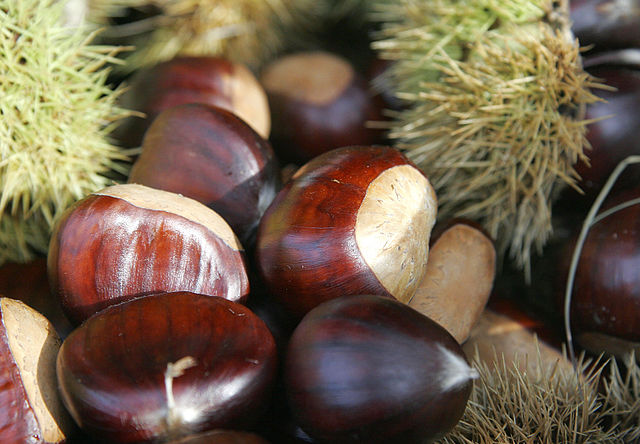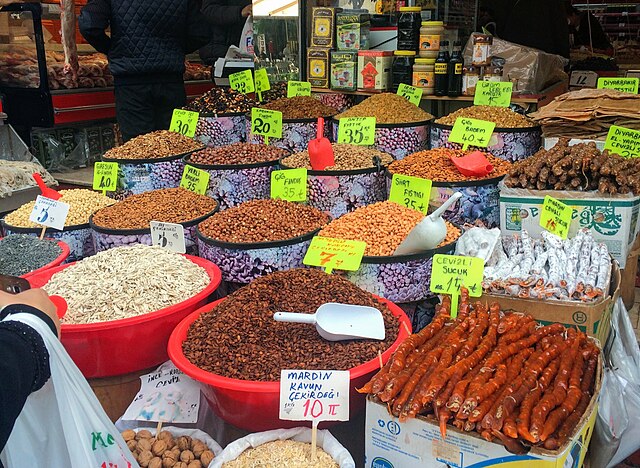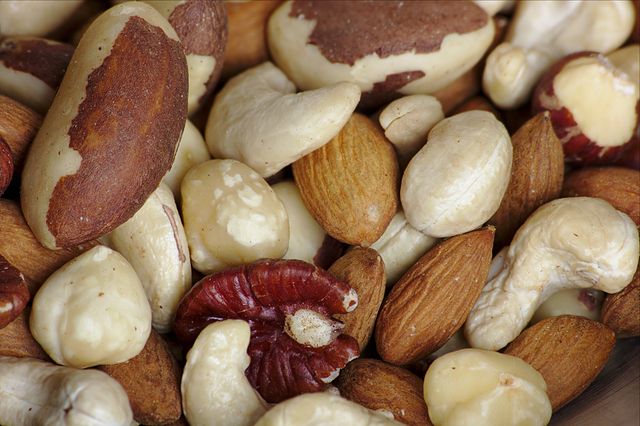The acorn, or oaknut, is the nut of the oaks and their close relatives. It usually contains a seedling surrounded by two cotyledons, enclosed in a tough shell known as the pericarp, and borne in a cup-shaped cupule. Acorns are 1–6 cm long and 0.8–4 cm on the fat side. Acorns take between 5 and 24 months to mature; see the list of Quercus species for details of oak classification, in which acorn morphology and phenology are important factors.
English oak acorn
Acorns from small to large of the Willow Oak, Q. phellos (very small, at center); the Southern Red Oak, Q. falcata; the White Oak, Q. alba; the Scarlet Oak, Q. coccinea; from southern Greenville County, SC, USA. Scale bar at upper right is 1 centimetre (0.39 in).
Diagram of the anatomy of an acorn: A.) Cupule B.) Pericarp (fruit wall) C.) Seed coat (testa) D.) Cotyledons (2) E.) Plumule F.) Radicle G.) Remains of style. Together D., E., and F. make up the embryo.
Ponies eating acorns. Acorns can cause painful death in equines, especially if eaten to excess amounts.
A nut is a fruit consisting of a hard or tough nutshell protecting a kernel which is usually edible. In general usage and in a culinary sense, a wide variety of dry seeds are called nuts, but in a botanical context "nut" implies that the shell does not open to release the seed (indehiscent).
Chestnuts are both botanical and culinary nuts.
Nuts being sold in a market
Raw mixed nuts, sold as a snack food
Image: Almonds in shell, shell cracked open, shelled, blanched








